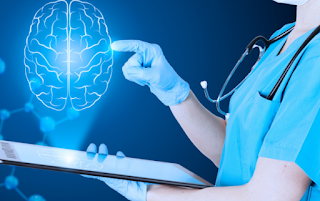The Contribution of a Neurosurgeon towards Spinal Disorders: Detailing the Various Approaches and Techniques
Neurosurgeons are offering their services in the realm of various disorders affecting the spine. These include spinal disorders which create disturbance in mobility and constitute pain. They utilize very modern techniques along with a caring approach in dealing with several disorders of the spinal column. Therefore, it will be good on the part of the patients if they gain more awareness about the manner these experts perform their functions and duties to decide upon what is best for their health.
Spinal disorders can be as varied as herniated discs and stenosis of the spine to tumors. Each of these conditions has different aspects of treatments that might be surgical or other interventions. Understanding these various forms of treatments would provide the much-needed relief from anxiety and give clarity to the person facing the spinal issues.
Knowing neurosurgeons' interventions provides hope for recovery and an improved quality of life. A pamphlet on standard techniques and approaches that neurosurgeons use to treat patients and how a patient should prepare for treatment is outlined below.
Key Takeaways
- There are many spinal disorders neurosurgeons can help with using high-tech treatments.
- Each form of disorder in the spine has its mode of operation.
- An educated patient is a better one in understanding their journey to health.
Understanding Spinal Disorders
Spinal disorders can seriously affect the mobility and quality of life for an individual. Knowledge of anatomy, types of disorders, and diagnosis of the spine is very important.
Anatomy of the Spine
There are 33 vertebrae in the spine, which may be categorized into several regions: cervical, thoracic, lumbar, sacral, and coccygeal.
- Cervical Spine: The top seven vertebrae (C1-7) support the neck.
- Thoracic Spine: The next 12 vertebrae (T1-12) are attached to the ribs.
The low back comprises the lumbar spine, which is made up of five weight-bearing vertebrae known as L1 to L5; these vertebrae support the body and allow movement. The sacrum has five fused vertebrae and the coccyx four fused bones at the base. The spinal cord can be considered an extension of the brain because it carries signals from the brain out to the body and vice versa. A normal spine is critical for overall functioning.
Spinal Disorders
Spinal disorders include a wide range of disorders affecting the functioning of the spine. The common ones include:
- Herniated Discs: The cushion disc between vertebrae bulges or breaks.
- Spinal Stenosis: Narrowing of the canal may result in pressure on the nerves.
- Spondylolisthesis: This is a condition wherein a vertebra slips out of place onto another vertebra below it.
- Degenerative Disc Disease: It is described as the loss of hydration and elasticity in the discs, causing pain.
These disorders can arise from age factors, injuries, and in some instances, genetic reasons. Early diagnosis is important for their proper treatment.
Common Symptoms and Diagnosis
The general symptoms of disorders in the spine may manifest in a variety of ways, including:
- Pain: This can occur in either the neck or back and sometimes radiate to limbs.
- Numbness or Tingling: Commonly experienced in arms or legs as a result of nerve involvement.
- Weakness: Reduced ability to carry heavy objects or walk can indicate a severe condition.
In diagnosing disorders within the spine, doctors usually perform the following:
- Physical Examination: By way of checking reflexes and muscle strength.
- Imaging Studies: X-rays, MRI, and CT scans visualize the spine.
- Neurological Examination: The checking of nerve function pinpoints the problem.
This knowledge of symptoms can lead to seeking medical intervention in good time and, therefore, improved outcomes.
Treatment Options
There are several methods used by neurosurgeons to treat spinal disorders. These range from non-operative treatments, operative treatments to rehabilitation protocols. Whichever is used often depends on the specific needs the patient has.
Conservative Management
For most patients, nonsurgical treatments form the first line of management for disorders of the spine. The common methods include:
- Physical Therapy: It strengthens muscles and aids flexibility.
- Medication: Pain relievers and anti-inflammatory drugs can relieve discomfort.
- Epidural Injections: Corticosteroids may be used to reduce inflammation and pain in the spine.
Besides these, a patient may consider changes in lifestyle. The stress on the vertebral column will be less if one loses weight and exercises regularly. These methods will bring symptomatic relief for many and often avoid the need for surgical procedures .
Surgical Interventions
Neurosurgeons may recommend surgical options when pain or symptoms are not relieved with other nonsurgical options. Some of the common procedures involve the following:
- Discectomy: It involves the partial removal of the herniated disc impinging on nerves.
- Laminectomy: A small part of the vertebra is removed to relieve the pressure on the spinal cord.
- Spinal Fusion: Mating two or more vertebrae together provides stability in the spine.
Generally, surgery helps in reducing pain, restoring functionality, and improving the quality of life. The type of surgery to be done would depend on the condition and requirement of the patient.
Rehabilitation and Recovery
Surgery is followed by rehabilitation, which forms an important part of recovery. A rehabilitation plan may include:
- Physical Therapy: Concentrated exercises to regain strength and mobility.
- Occupational Therapy: Assisting patients in returning to daily activities safely.
- Pain Management: Strategies for ongoing pain control after surgery.
Recovery would depend on the type of surgery and the individual's health. It is of the essence that follow-up on the progress should be done together with the health professional for the best results. Effective rehabilitation promotes healing and helps prevent future spinal issues.

